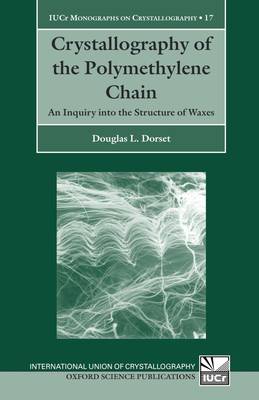
Je cadeautjes zeker op tijd in huis hebben voor de feestdagen? Kom langs in onze winkels en vind het perfecte geschenk!
- Afhalen na 1 uur in een winkel met voorraad
- Gratis thuislevering in België vanaf € 30
- Ruim aanbod met 7 miljoen producten
Je cadeautjes zeker op tijd in huis hebben voor de feestdagen? Kom langs in onze winkels en vind het perfecte geschenk!
- Afhalen na 1 uur in een winkel met voorraad
- Gratis thuislevering in België vanaf € 30
- Ruim aanbod met 7 miljoen producten
Zoeken
€ 394,95
+ 789 punten
Omschrijving
By considering the solid state packing of linear chain wax components, this book aims at understanding three things: firstly, which modifications of molecular components are allowed for maintaining stable solid solutions; secondly, what happens when stability conditions are traversed and fractionation begins and thirdly, the structure of fractionated arrays. The co-compatibility of molecular ingredients is considered in terms of their shapes and relative sizes, following an approach originally proposed by Kitaigorodskii. As demonstrated profusely by the crystal structures of pure component types (e. g. alkanes, fatty alcohols, fatty acids, long chain esters, cholesteryl esters) and insertion of functional groups (e. g. chain branches, unsaturation, heteroatoms), characteristic molecular packing arrays provide important geometric information for understanding the co-packing of different molecules in mixtures. Single crystal and spectroscopic data from polydisperse arrays can then be evaluated to arrive at plausible structures of solid solutions and fractionated systems. The resultant structures are not only relevant to the understanding of so-called waxes but also include certain classes of polymers. The ramifications of this work extend into any solid state array of polymethylene chains, including lipid foodstuffs.
Specificaties
Betrokkenen
- Auteur(s):
- Uitgeverij:
Inhoud
- Aantal bladzijden:
- 246
- Taal:
- Engels
- Reeks:
- Reeksnummer:
- nr. 17
Eigenschappen
- Productcode (EAN):
- 9780198529088
- Verschijningsdatum:
- 17/02/2005
- Uitvoering:
- Hardcover
- Formaat:
- Genaaid
- Afmetingen:
- 156 mm x 234 mm
- Gewicht:
- 521 g

Alleen bij Standaard Boekhandel
+ 789 punten op je klantenkaart van Standaard Boekhandel
Beoordelingen
We publiceren alleen reviews die voldoen aan de voorwaarden voor reviews. Bekijk onze voorwaarden voor reviews.









